Google Pixel XL vs LG V20
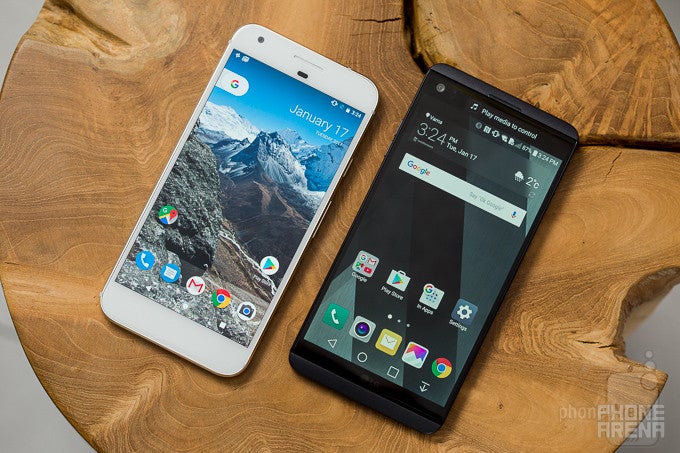
Introduction
Google stirred things up in the cozy Android high-end phone market with its Pixel lineup of phones: for years, things in the Android space have been dictated by the likes of Samsung, LG, HTC and Motorola (...well, mostly Samsung), but this year, we have a truly new player.
The Pixel is just that: the first phone by Google, one with the promise of timely updates and a sprinkle of Google magic.
Its Pixel XL version is the 5.5-inch, phablet-sized model, a phone for lovers of big screens. One of its biggest rivals in the United States is the LG V20, an excellent 5.7” phone that has a ton of tricks up its sleeve: a secondary ticker display, a dual camera system, high quality audio and manual video controls. Let’s see what are the pros and cons of the two, and do we have a winner in this one-on-one battle.
Design
The Pixel XL is a comfortable and safe aluminum design that feels better than it looks, while the V20 is oversized and features a utilitarian design.
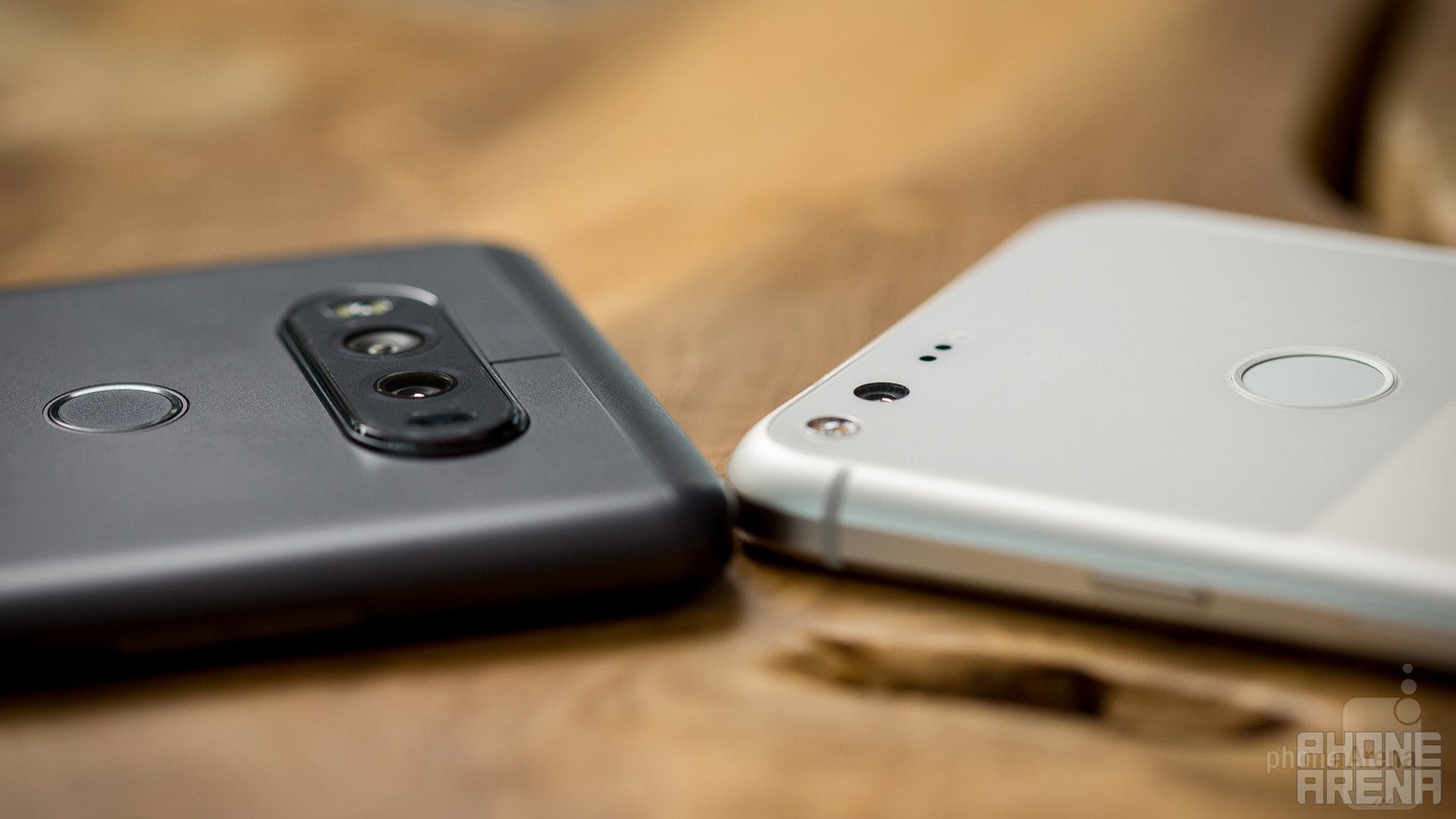
LG has never been a design champion or a trend-setter in any meaningful way. Sure, it has had some nice devices, but it has mostly focused on undercutting others on price and including some interesting and novel features that the others lack. The LG V20 is also not a beauty queen: the device is rather utilitarian and big. Sure, it’s got a metal back going for it, but it's not pretty in any way, plus there is also a gigantic and unsightly camera hump at the back, perhaps to hint at its camera-centricity.
The Google Pixel XL, on the other hand, is a surprisingly well-crafted first-gen device. It rocks an aluminum body with a distinct glass accent in the top half. In real-life it feels well balanced and not as thick as on pictures. The slight curve around the edges makes it easier to pick up from a table and fit more comfortably in the palm of your hand.
Size is crucial for such big phones: many people want a big screen, but hate to deal with an oversized device. This is important because neither of these phones is small, but it is the LG V20 that feels oversized. With the secondary display and the large screen, the V20 is noticeably bigger than the Pixel XL and that might be an inconvenience.
Next up, we ought to mention that both phones use on-screen buttons and there are no physical keys up front. The fingerprint scanners are on the back, and on both it works reliably and quickly, but the one on the Pixel seems a bit faster. Both devices also use the reversible USB-C port and both phones come equipped with a good old 3.5mm headset jack.
Wondering about any special water protection? Unfortunately, that is one neat feature present on some modern flagships, but not on these two.
Display
The Pixel XL features an AMOLED screen, while the V20 sports an LCD screen. Both are good, but not great.
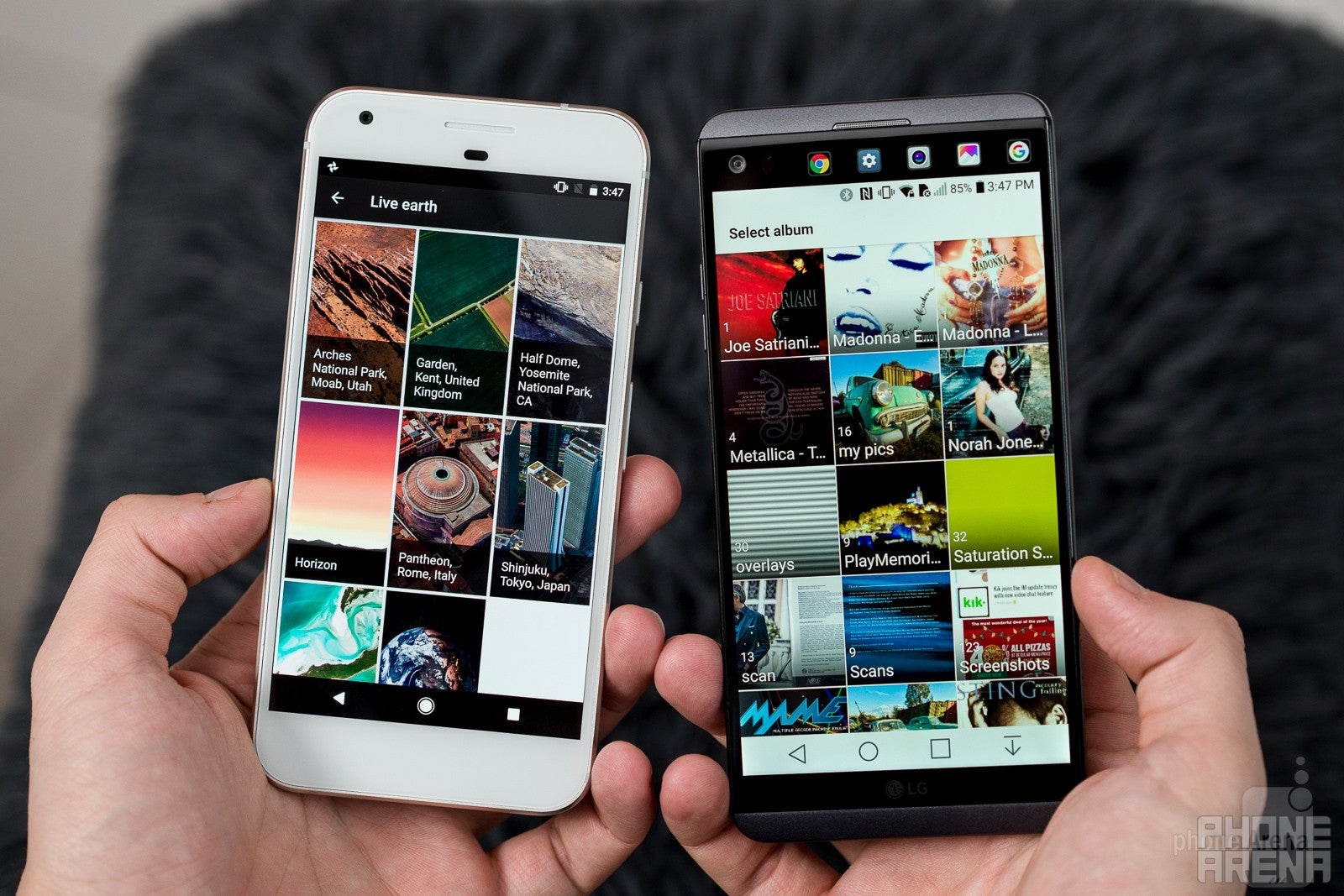
Which screen technology do you prefer: LCD or AMOLED? This seems to be a question that bothers many gearheads these days, as the advantages of AMOLED seem clear: deep blacks, excellent contrast and viewing angles, eye-popping color. But the reality is that LCD screens have been around for a while and they have become pretty darn good as well.
The battle between LCD and AMOLED is obvious in these two: the LG V20 sports an LCD display, while the Pixel opts for an AMOLED screen. The latter also shows what Google thinks is the more promising technology, it’s gone for AMOLED.
So what is the actual screen quality on the two? The V20 has a decent, but not great LCD screen: it’s a sharp, high-res 5.7-inch 1440 x 2560 display, but it has a somewhat bluish tone and colors that are not well-balanced. We look at the accepted sRGB color standard for photos and videos and the V20 does not fit it well.
The Pixel XL, on its parts, has a 5.5” display that also features a 1440 x 2560-pixel resolution, but it’s also a Pentile screen, a clever tech that makes do with less sub-pixels, while the V20 has three sub-pixels - one red, one green and one blue for every pixel. The Pixel XL defaults to a similar, slightly oversaturated look that has eye-popping colors like on the V20, but it also has an sRGB color mode that you can enable in the settings panel.
In terms of brightness, the LG V20 can go high enough outdoors, so it’s easy to see what’s on the screen, while the Pixel XL has trouble cranking out high-enough luminance, and it’s a bit of a pain using it on a bright sunny day. This is one area we hope Google improves in the future.
Interface and features
While both run on Android 7, the Pixel XL has a flat, modern look, while the V20 uses a custom LG look and overwhelms with features.
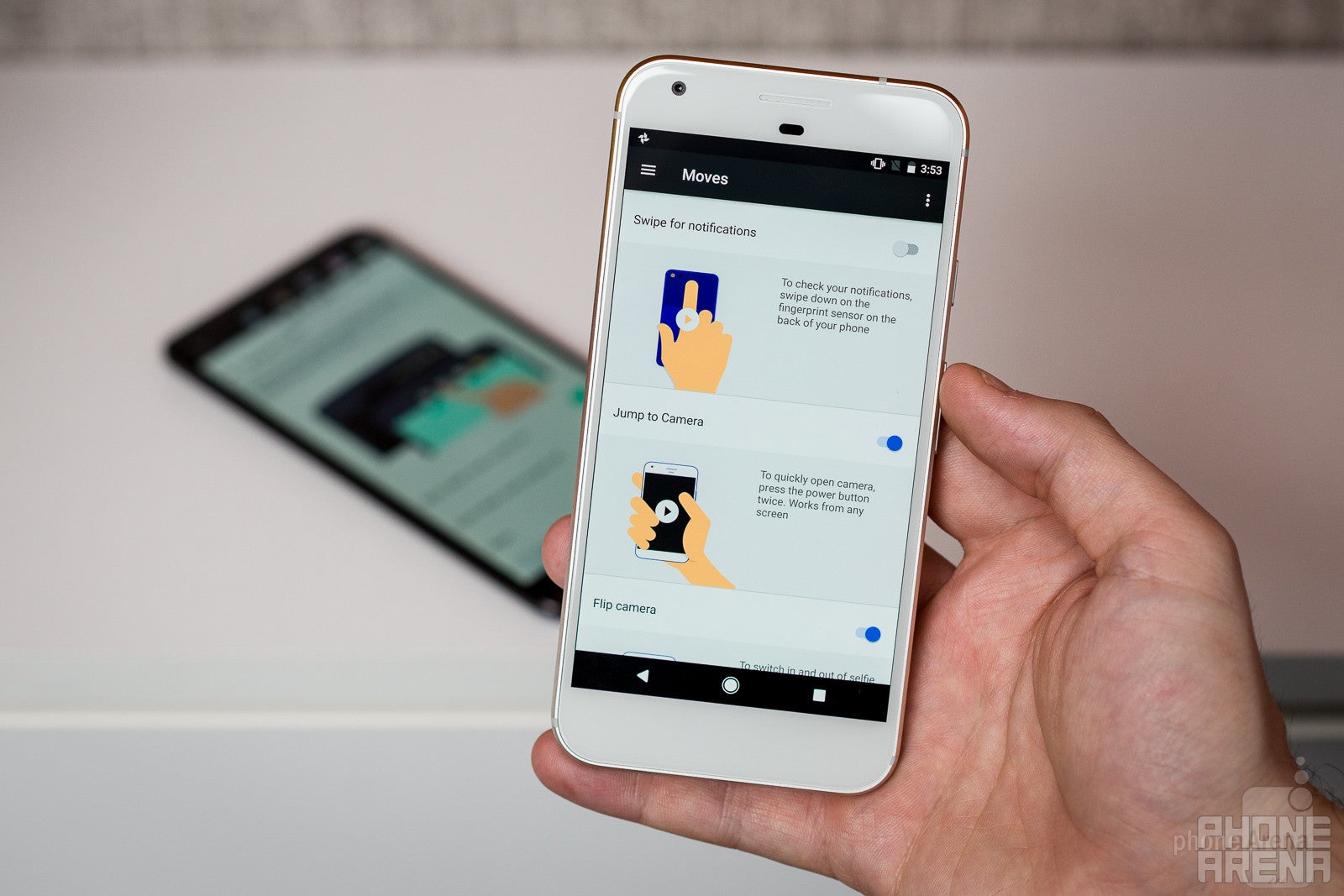
Android updates have been the sore point for all phone makers using the platform, but LG has been a bit of an exception this year with the V20, the first non-Google and non-Nexus phone to feature Android 7.0 Nougat on board. However, as usual with the company, this is not a clean build of Nougat with the typical for Google Material Design elements and look. Instead, it’s a heavily modified version of the platform with a ton of customization options, so much so that it can feel a bit overwhelming.
The Pixel XL also rocks Nougat, but there is one important distinction: it also comes with the promise of timely updates in the future.
Both phones rock all the cool new features of Android 7: the split-screen multitasking, double tap the task switcher for an alt-tab-like shortcut, the cool bundled notifications, the improved Doze that results in better battery life.
Google’s Pixel, however, has the powerful Assistant built in. It’s mind-bogglingly fast and is able to recognize voice commands with impressive accuracy. There are also the new Live Earth wallpapers, a stunning selection of wallpapers that use a 3D effect way cooler than the subtle parallax effect you’ve probably seen on iPhones.
It’s also interesting that there seems to be a new vibration motor on the Pixel with a particular pattern that you ought to feel yourself to fully understand. Is it an improvement? It’s a subjective thing: some people in our office like it, yours truly considers it to be rather vague and not very helpful in typing.
Performance, Processor and Memory
We’re pleased to see smooth and fast performance on both. The V20 wins in terms of storage.
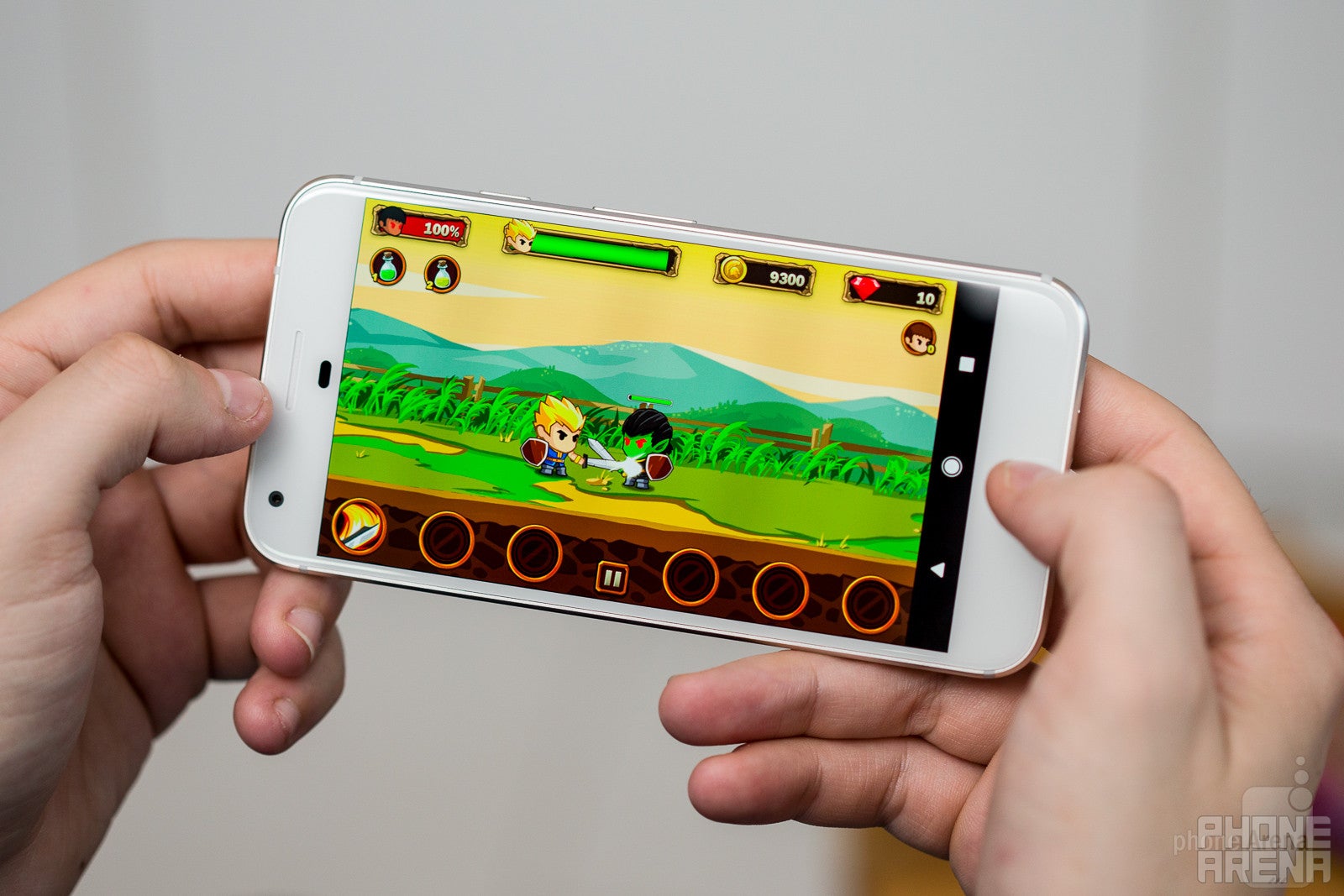
Let’s get the specs out of the way first: the Pixel XL runs on the newest Snapdragon 821 system chip, while the V20 rocks a slightly older Snapdragon 820, and both have 4GB of RAM.
Is there a difference between the two? A very slight one according to the benchmarks. And what about real life? We’re very pleased to say that both phones feel fast and fluid, with smooth animations and almost no stuttering. The experience is quite a treat on both, but we have to give it out to the Pixel that has a slight edge in terms of how fluidly and smoothly it runs.
Its slight advantage in benchmarks is something that gamers will care more about: the phone is indeed a bit more capable and future-proof.
When it comes to storage, LG goes all out: the V20 ships with 64GB of internal storage on board and it’s got a microSD card slot that allows for expandable storage. The Pixel only has 32GB for the base model (there is a pricier and harder-to-get 128 gig version as well), but it does not have a microSD card slot. To alleviate the pains of no expandable storage, though, Google gives Pixel customers unlimited storage of photos and videos via the Google Photos cloud storage.
Camera
The Pixel XL takes computational photography to the next level and has slightly better image quality than the also-excellent V20.
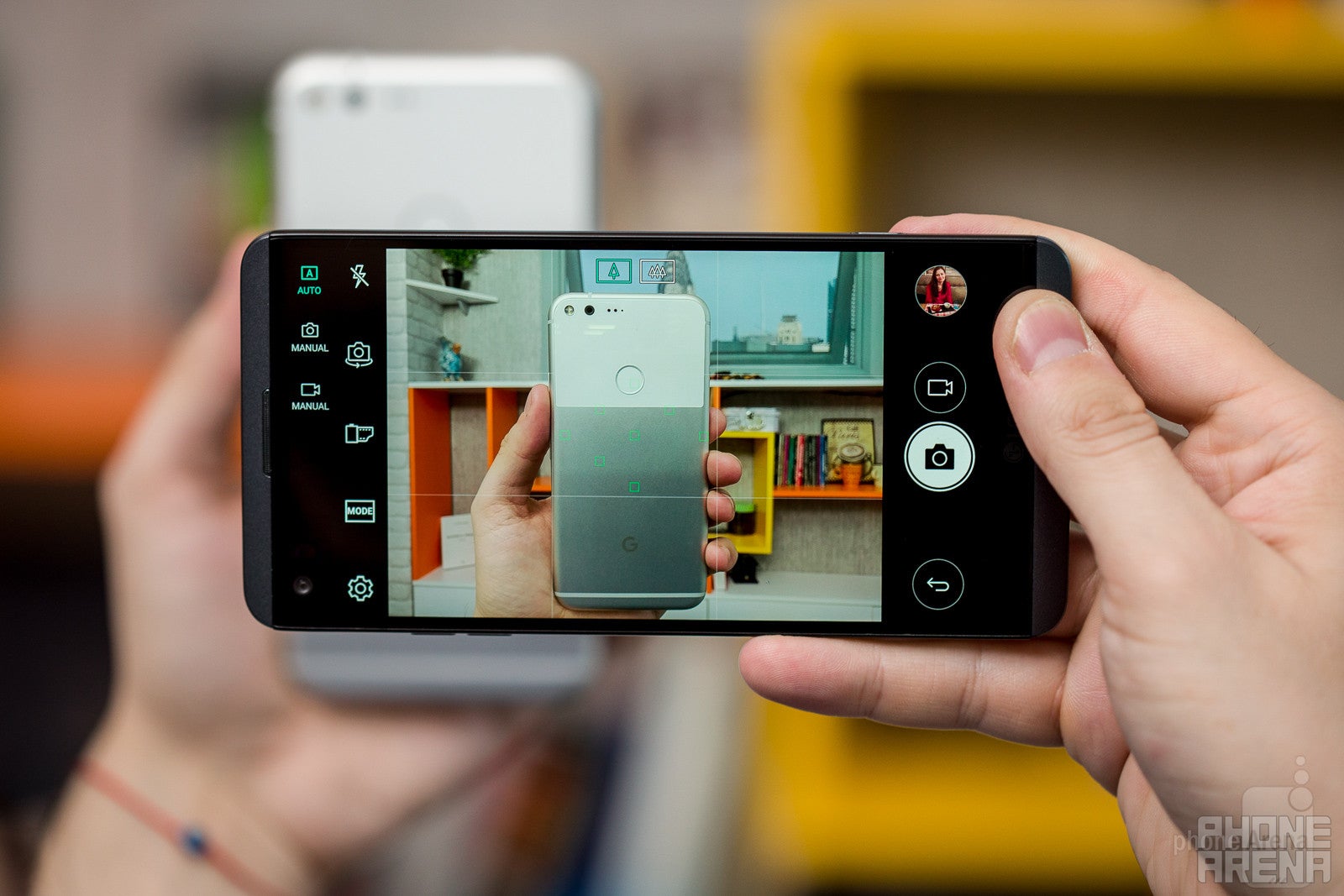
Google knew that it could not get away with a mediocre camera in a flagship phone, and that’s why it put some real effort in making the Pixel XL take great pictures.
First, the specs: the Pixel XL has got a 12MP rear camera that is much more discrete than the gigantic center-positioned camera bump on the V20. It’s also flush with the phone’s back, unlike the large hump on the V20. The Pixel camera also has dual LED flash, but no optical image stabilization (OIS). The V20, on its part, has a 16MP camera main rear camera and a secondary, 8-megapixel rear positioned shooter that captures super wide-angle images. The 16MP camera unit also sports OIS.
As for the camera apps, you can start up both quickly with a shortcut: double-press the lock key starts the camera. Both get the job done, but are vastly different. The Pixel has a minimalist camera app with almost no controls visible and you have to almost guess to side-pull menus and adjust settings. The V20, on the other hand, has a simple shooting option (that we recommend for most people), but it also has an all-out manual control option that brings things like ISO, shutter speed, manual focus and white balance within easy reach. Plus, there are similarly detailed manual controls for video. While they are not everyone’s cup of tea, they are made well and the simple shooting option is equally well-made.
Image Quality
Make no mistake, these two phones are among the very best camera phones around. The Pixel takes pictures with its HDR+ mode always on, and that’s done on purpose: it’s a very subtle HDR effect that produces stunningly well balanced images with great dynamics and rich color, balanced in terms of exposure as well. We’re also impressed with how fast the Pixel is able to lock focus. The V20, on its part, captures pictures with a little less dynamics, that look a bit flatter, but realistic, which is a great asset to have. Both phones also do well in dim conditions, but we noticed that the Pixel XL is just a little more consistent in getting the white balance correctly.
The super-wide angle lens on the V20 has a lot of distortion around the edges and has lesser detail, but still it’s nice having it for the sheer amazement that you can capture of a wide landscape.
Both phones have a strong flash that illuminates a pitch dark scene, but not in a particularly flattering way as the light is a bit harsh from both.
Turning to the front cameras, the V20 captures a good image and has both a wide and a regular viewing angle option, but we found it a bit lacking in detail, while the Pixel has a single, a little bit more narrow viewing angle, but has superior detail in most cases.
Video Quality
Both the Pixel XL and the V20 can record 4K video at 30 frames per second, and they can also record 1080p videos at either 30 fps or 60 fps.
The two are neck-to-neck in terms of video quality: both get basics like exposure and colors right, but the Pixel is a bit faster with auto focusing, which is crucial for video.
Then, there is video stabilization. While the V20 has optical image stabilization, it is the Pixel that makes the most use of its software stabilization and ends up recording smoother looking videos, with less jitter even in 4K resolution (the V20 does not use its software stabilization for 4K videos, only in 1080p).
Multimedia and sound quality
The V20 is a champ with high-quality audio and high-res mics. It brings high-end headphones to life.
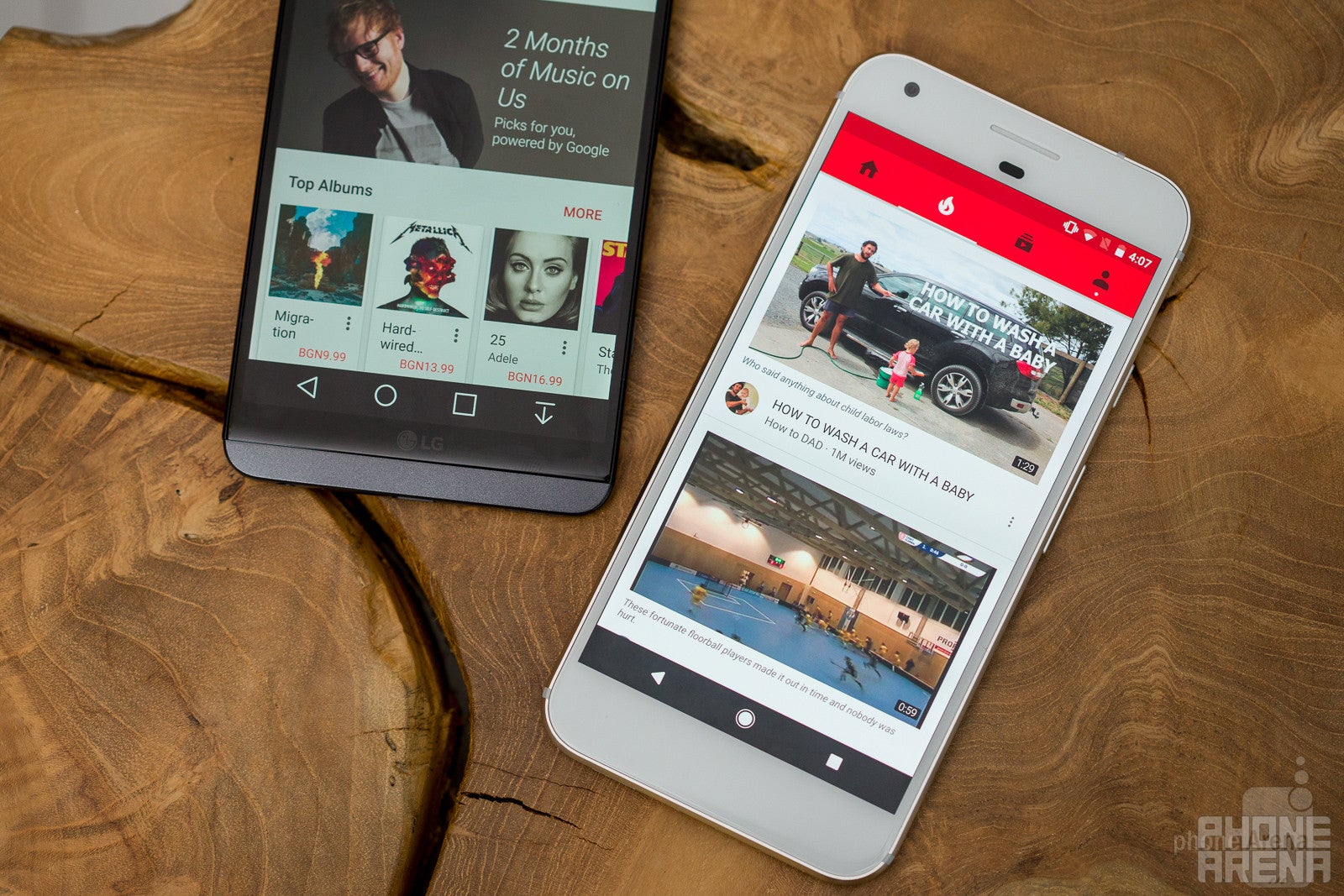
Neither phone can brag about having stereo speakers. Instead, both phones rely on a single, bottom-firing speaker. Sound quality out of it is decent on the V20, but it does not shine with any stunning clarity, while the Pixel XL’s speaker is a little more refined, delivering really nice, clear, and balanced sound. You get crisp highs and thumping lows, all without much discernible distortion. It also feels very powerful for its size.
The built-in speaker, however, is no good for more serious audiophiles who will rely on audio via the 3.5mm headset jack. Both phones have that jack, but it’s the V20 that really uses it to its maximum.
The phone has a quad DAC system which in simple terms contributes to extremely low noise and distortion levels for clearer sound. This improvement can be properly heard with a set of expensive headphones, so don’t expect miracles from it if you are listening on a pair of cheap airbuds.
The V20 also supports high-fidelity audio recording with three high-quality microphones that prevent sound from clipping even at loudest levels. Perfect for recording sound at concerts, clubs and other obnoxiously loud venues.
Call quality
As you’d expect from modern smartphones, both the Pixel XL and LG V20 have very good call quality. Both are able to convey voices that sound clear, crisp and sufficiently loud, and we have nothing to complain about in this department.
Battery life
LG’s improvements in battery life are not enough and the V20 is still behind in terms of battery longevity. The Pixel XL is right in the middle.
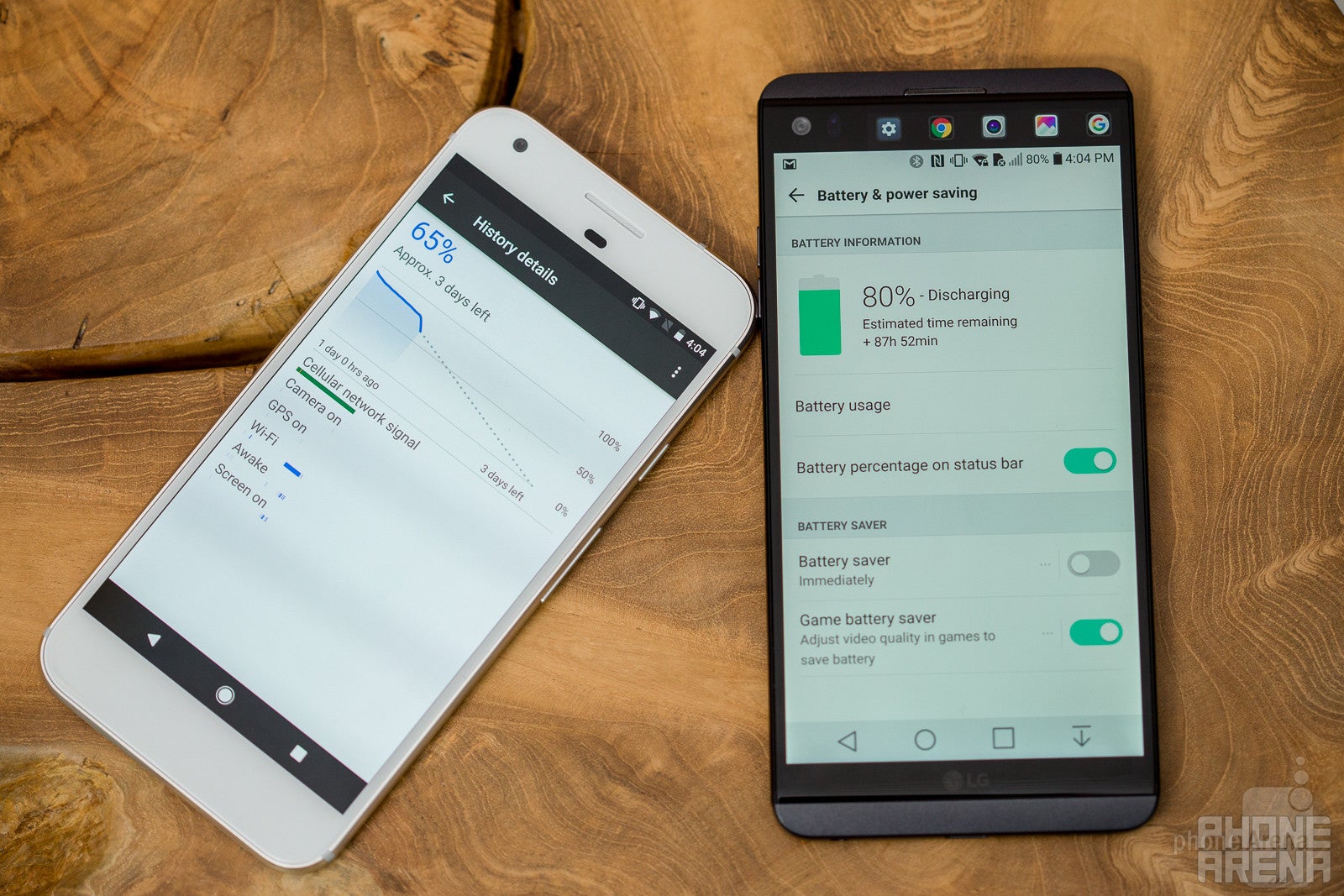
Battery capacity is a good starting point when we talk about battery life, but not more than a starting point: it’s all about overall optimizations. With this in mind, we can look at the battery cells inside these two: a 3,450 mAh battery on the Pixel XL and a slightly smaller, 3,200 mAh pack on the V20.
LG has not performed very well in terms of battery life recently. The last year’s V10, this year’s G5, all phones with sub-par battery life. It took notice and included a slightly larger-than-before battery in the V20, but… battery life is still far from great.
On our custom battery test, where we tune both phones to 200-nit brightness and run them through the same typical usage scenario the Pixel outperforms the V20. The Pixel itself is no champion with a score of 7 hours and 19 minutes, but the V20 is a bit less impressive at 6 hours and 23 minutes.
In real life, both phones are able to get you through a full day of use, but more intense use might actually deplete them both before the end of a longer day.
Both phones have quick charging - thankfully - a great option if you need to quickly top up your battery. Here, the V20 excels: it takes just an hour and a quarter to get its battery charged, while the Pixel takes nearly two hours.
Conclusion
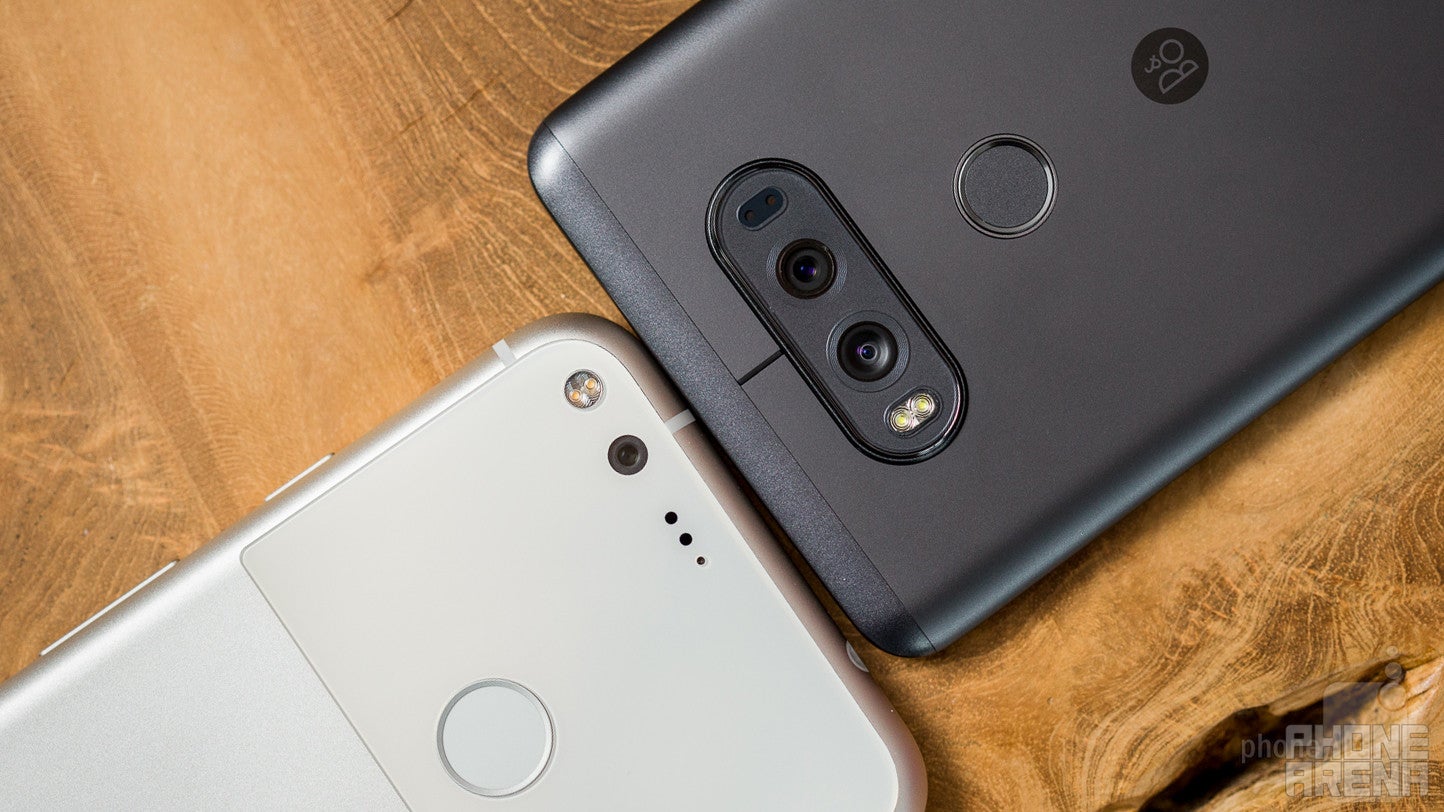
At the end of the day, Google has delivered with the Pixel XL: it is a surprisingly solid phone, especially for a first-generation product. While many would wish it was cheaper, we can definitely see justification for its flagship price: the Pixel costs $770 for the base 32GB version.
The LG V20, on the other hand, has gone through a few price revisions: for limited periods, it has been sold at 50% off, and is currently sold with a $200 gift card over at Verizon Wireless. Given those common price cuts, paying the full $800-ish MSRP for the V20 does not seem fully justified. You'd be better off waiting for a future price cut.
If we take price out of the equation, we see a number of areas, where the Pixel is on par or better than the LG V20, including the camera that captures images that look better and videos with faster auto-focus and better stabilization, and the very smooth and fluid Android performance. On the other hand, the LG V20 continues to stand as a unique proposition for true power users who may put its larger screen and advanced features to good use.
The reasonable recommendation for most users out there would be the Google Pixel XL. The LG V20 is a very good phone, but with its overwhelming feature set and pro-centric audio and video features, it comes off as more of a niche product.
Google Pixel XL
Pros
- Solid design
- Promise to get updates on day one
- Well-optimized, smooth-performing Android
- Camera captures great stills and video
- Very good battery life
LG V20
Pros
- Versatile video recording
- Plentiful 64GB of storage in the base model
- Support for expandable storage
- Easily removable battery
- High-fidelity audio recording capabilities
- Fast charging

Follow us on Google News


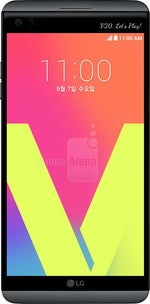




















Things that are NOT allowed:
To help keep our community safe and free from spam, we apply temporary limits to newly created accounts: